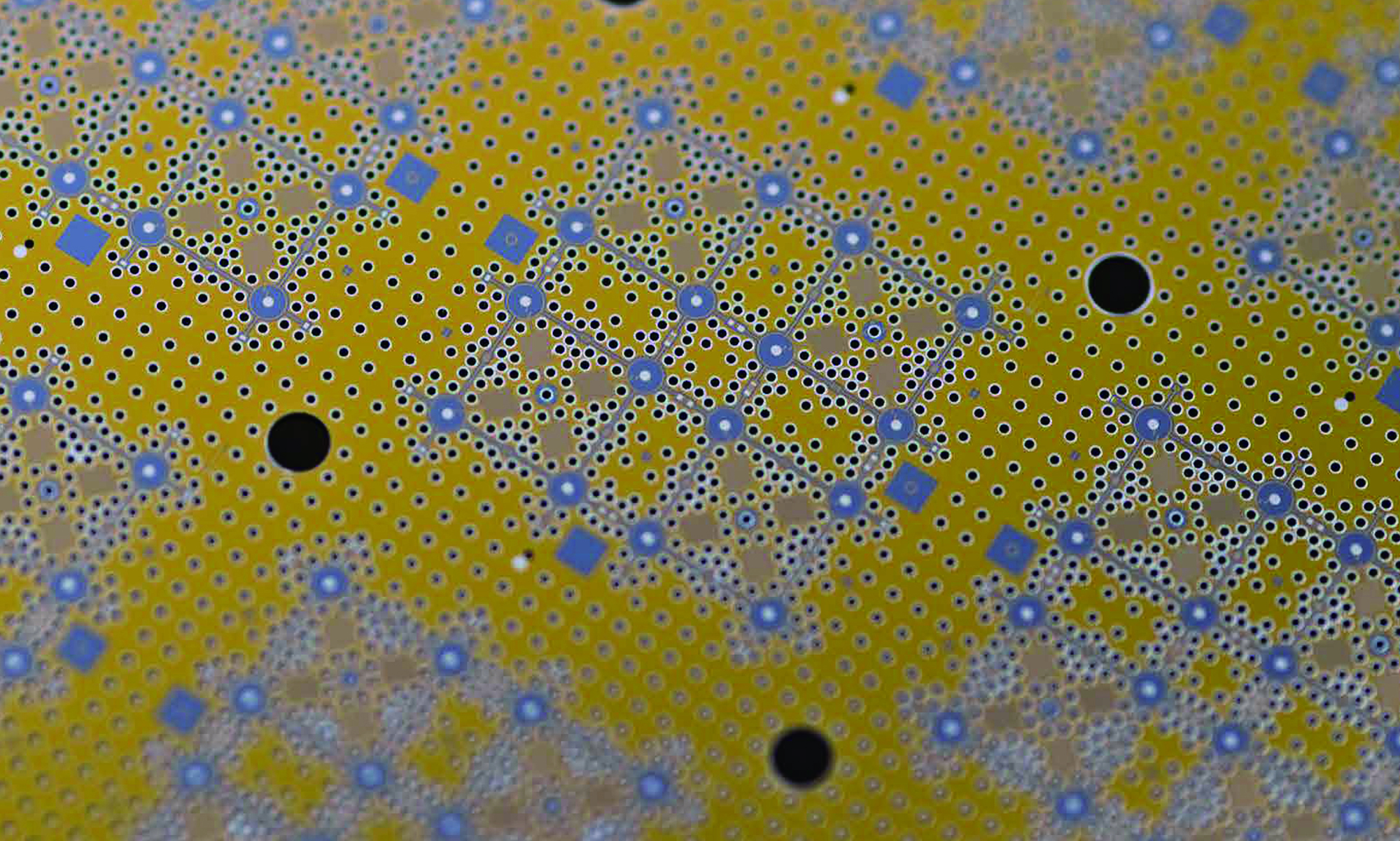超伝導量子回路Superconducting Quantum Circuit
物理工学専攻Department of Applied Physics

量子計算は量子力学の原理に基づいた新しい計算のパラダイムです。量子情報処理においては、量子重ね合わせや量子もつれといった、私たちの直観とは相反する量子力学の性質が重要な役割を果たします。量子コンピューターが実現すると、例えば分子のエネルギー準位や化学反応ダイナミクスや強相関電子系材料のシミュレーションなど、特定の計算問題において従来のコンピュータを大きく凌ぐ性能を発揮すると期待されています。また、その他の応用として機械学習への適用なども現在盛んに研究されています。
超伝導量子回路は量子情報処理を可能にします。量子情報の基本単位である量子ビットは2つのエネルギー準位を持つ物理系で表現され、超伝導回路上では量子ビットは電子の集団運動モードの量子化準位として表現されます。超伝導効果のおかげでエネルギー散逸が抑えられ、量子ビットの状態が長く保たれます。
私たちは、量子情報処理や量子通信、量子センシングに向けた超伝導量子回路を開発しています。
超伝導量子ビット集積回路チップ
2019
制作:中村泰信
寸法:1290×1290×330
所蔵:東京大学 大学院工学系研究科 物理工学専攻 , 東京大学 先端科学技術研究センター
量子コンピュータの実現に向け開発中の超伝導量子ビット集積回路チップ写真。1cm角のシリコンチップ上に16量子ビットが配列されている。
Quantum computing is a new paradigm of computation based of fundamental principles of quantum mechanics. The weird properties of quantum mechanics, which are very counterintuitive for us, such as quantum superposition and quantum entanglement, play key roles in quantum information processing. Quantum computers, once realized, is expected to largely outperform conventional computers for particular types of computational tasks such as simulations of energy levels and dynamics of molecules and strongly correlated materials. Applications of quantum computing in other problems such as machine learning are currently investigated.
Superconducting electric circuits can process quantum information. An elementary unit of quantum information, a quantum bit, or qubit in short, is represented by a physical system with two distinct energy levels. In superconducting circuits, qubits are realized as quantized energy levels of a collective excitation mode of electrons. Thanks to the superconductivity, the energy loss is minimal, which makes the qubit coherent.
We are developing superconducting quantum circuits for quantum information processing as well as quantum communication and sensing.
Circuit Chips with Integrated Superconducting Qubits
Production: Professor Yasunobu Nakamura
Size: 1290×1290×330
Collection: Department of Applied Physics, School of Engineering, The University of Tokyo
Research Center for Advanced Science and Technology, The University of Tokyo
Prototype of integrated superconducting quantum-bit circuits developed for quantum computing.
Each chip (1x1cm) in the silicon wafer contains an array of 16 quantum bits.

